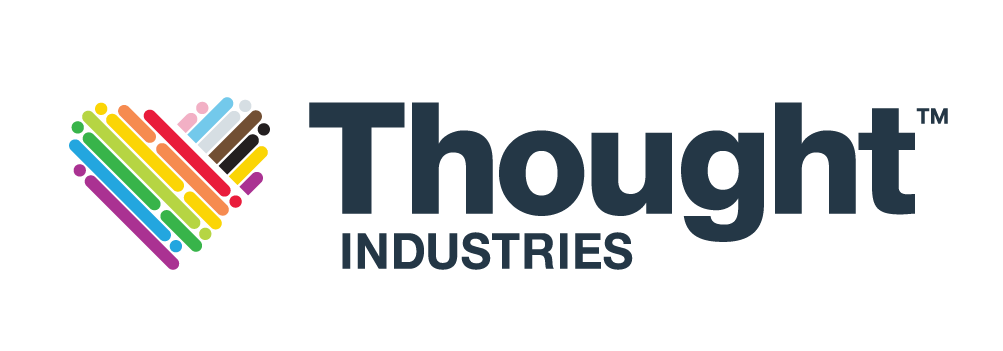Partners who complete top-notch training see real financial benefits—it’s just that simple. In fact, a study by AWS found that 74% of participants reported higher earnings after obtaining AWS Certifications.
That kind of impact speaks volumes. If partners aren’t getting the right training, they won’t close deals or represent your brand effectively.
When partners lack clear, structured education, the result is inconsistent messaging, limited market reach, and low engagement. Partners without in-depth product knowledge may struggle to explain their value to customers. And when training isn’t engaging or accessible, it falls flat—leaving your network underperforming.
This is why partner education platforms are critical. With the right learning platform, you can align partner training programs with your business goals, deliver tailored training material, and track real outcomes.
In this article, we’ll discuss what to look for in a partner education platform and how to ensure that your investment drives growth, expands your market reach, and gives you a true competitive edge.
Key Challenges in Partner Training and How the Right Platform Solves Them
Training partners come with real challenges. Your network may span multiple regions, industries, and partner types. Each partner has unique goals, works in different roles, and manages their own priorities. Without a solid system, training becomes complicated fast.
Some key challenges include:
- Scalability: As your network grows, keeping training consistent and up to date becomes harder without a centralized solution.
- Engagement: Partners won’t prioritize training that’s too long, outdated, or irrelevant—or even just boring. Engagement drops, and training initiatives lose steam if content lacks incentives or interactive elements.
- Inconsistent messaging: Unlike customer training, where you control the message, partners need the right tools to represent your brand accurately.
- Measuring impact: You may not know if partners are completing training or applying it effectively. You can’t tie training to sales outcomes or customer satisfaction without clear data.
The good news? The right partner education platform solves these problems with the right features. Let’s look at what matters most when choosing a platform that supports growth and partner success.
What to Look for in a Partner Education Platform
When investing in partner education platforms, you want to be sure your chosen tools are built to drive real outcomes. To support real-world readiness, Thought Industries uses Bongo for AI-based video certifications—giving partner resellers a chance to practice and validate their knowledge.
Great platforms do more than deliver content.
They also help you:
- Scale training across growing networks
- Keep partners engaged
- Extract insights to measure success
Let’s break down what to look for in each feature and explain how it helps partners succeed so that your training investment pays off.
1. Multi-Tenancy for Custom Partner Training Portals
Your partners each have unique needs. Resellers, VARs, integrators, and other partners often require different types of training based on their role, region, or certification level. A one-size-fits-all approach won’t deliver the results you’re aiming for.
To serve diverse partner groups effectively, look for a platform that lets you:
- Segment learning paths by partner type, location, or experience level
- Distribute tailored training material to meet specific partner needs
- Build and manage multiple platforms or custom-branded portals from a single system
When partners receive relevant content that speaks directly to their role, they’re more likely to engage and apply what they learn. This keeps partners aligned with your brand and ready to deliver results.
For example, a software company can use multi-tenancy to offer one learning portal for sales partners focused on product positioning and another for implementation partners who need technical onboarding. This targeted approach boosts both adoption and performance.
2. Flexible Learning Options: On-Demand, Live, and Hybrid Training
Partners work across different time zones and schedules; training needs to meet them where they are. The right learning platform should offer flexible training delivery methods that make learning accessible and practical.
Look for a platform that includes:
- On-demand learning for self-paced training, available anytime
- Hybrid models that combine both approaches for greater flexibility
- Live webinars and instructor-led sessions for partners who benefit from real-time engagement
When partners can learn in a way that fits their schedule, they’re more likely to complete training and retain important details. A hardware company, for example, might use on-demand training to update partners on new product features and live Q&A sessions to address troubleshooting questions. Flexible training delivery keeps partners engaged and ready to support customers.
3. Certification and Gamification to Boost Engagement
Keeping partners engaged requires more than just offering content. They need clear reasons to complete training. Partners are far more likely to follow through when they know it has value for them.
To do that:
- Look for certifications that validate a partner’s expertise and give them credentials they can use to build trust with clients.
- Choose a platform with gamification tools like badges, leaderboards, and progress tracking to motivate partners along the way. Often built into learning engagement platforms, these features help partners stay focused and committed.
For example, a cybersecurity company might offer certifications that resellers can share with clients to boost credibility and win more deals. Together, certifications and gamification make training more rewarding and encourage partners to apply what they’ve learned in real-world sales and service.
4. AI-Powered Analytics to Track Partner Performance
Companies need clear data to determine whether training is improving partners’ performance. Without the right analytics, it’s hard to tell if partners are completing courses, improving their skills, or making more sales.
To do that:
- Look for a platform with AI-powered analytics that track training completion rates and connect training to real outcomes like sales and customer satisfaction.
- Platforms should also offer insights on how to improve training initiatives, including content suggestions from industry experts.
These tools help identify gaps in partner knowledge and show where to adjust training for better results. For example, a SaaS company might use analytics to see which partners close more deals after completing specific training modules.
5. Seamless Integration With Your Business Tech Stack
Partner training should align with the tools your teams and partners already use. Training that connects to CRM, sales enablement, and customer support systems becomes a strategic asset that supports real business goals.
Here’s what to look for:
- CRM integrations (like Salesforce) to track partner training alongside deal performance
- Single sign-on (SSO) so partners can access training easily from their existing portals
- APIs that connect training with sales, marketing, and customer education solutions for a seamless experience
When training is part of your broader systems, it becomes accessible, data-driven, and actionable. For example, a B2B software company might use CRM integration to track which partners complete training and how that relates to deals closed, making it easier to prove the value of training.
6. Custom Branding and White-Labeling for a Cohesive Experience
Training should be an extension of your brand. Partners are more likely to trust and engage with education that reflects your company’s identity.
To do that:
- Look for white-labeling options that let you fully customize the design and experience of your training portals.
- Ensure the platform offers custom UI and UX features, including branded navigation, visuals, and layouts that match your company’s look and feel.
High-quality design, like what learners expect from higher education, builds confidence and professionalism. A continuing education platform that looks like a natural part of your business strengthens consistency and credibility. For example, a fintech company can use white-labeled training to maintain a polished, unified brand experience for partners worldwide.
How to Maximize Network Performance With the Right Platform
The right partner education platform is only valuable if you use it strategically. Companies need to focus on how they deliver training and engage partners over time to get the best results.
Here are four actionable ways to maximize partner performance and make the most of your platform:
- Segment partners for targeted learning: Not all partners need the same training. Use multi-tenancy tools to create role-based and region-specific training. This ensures partners get content relevant to their role and market, whether they’re sales teams needing product positioning or technical partners handling implementation.
- Keep training interactive and engaging: Engagement drives retention—partners are more likely to complete training when it’s interactive and rewarding. Add gamification elements like leaderboards and badges to spark motivation. Offer certifications to give partners recognition they can share, building both skills and credibility.
- Align training with business goals: Training should support revenue and growth. Tie learning paths to training initiatives, sales goals, and product launches. Track partner performance before and after training to measure real impact. This ensures training stays aligned with business outcomes.
- Offer continuous learning and updates: Your products and services evolve—so should your training. Keep partners updated with regular training material updates, refresher courses, and ongoing certifications. Treat partner training like a continuing education platform so partners stay informed and ready to serve customers.
By focusing on these four strategies, companies can turn partner education into a true growth driver aligned with broader business and customer education efforts.
Partner Education That Drives Real Results: What’s Next
Partner education platforms give companies a powerful way to grow by equipping partners with the right tools to succeed. The right platform helps businesses increase engagement, deliver consistent messaging, and drive sales.
To get the most value, focus on solutions that offer scalability, impactful engagement tools, analytics for measuring success, and seamless integrations with your existing tech stack.
Thought Industries delivers a market-leading partner education platform to help businesses maximize partner performance and reach. Ready to elevate your partner training?
Schedule a demo to see how Thought Industries can help you create scalable, engaging education programs that drive results.



